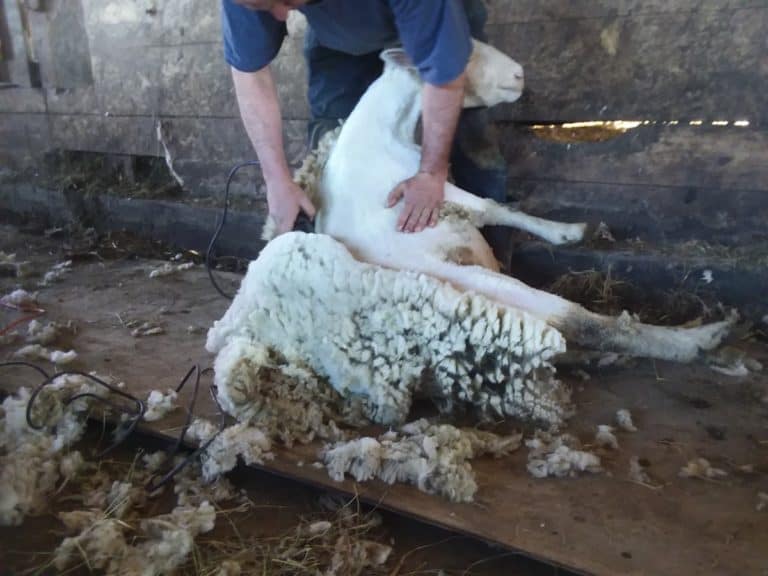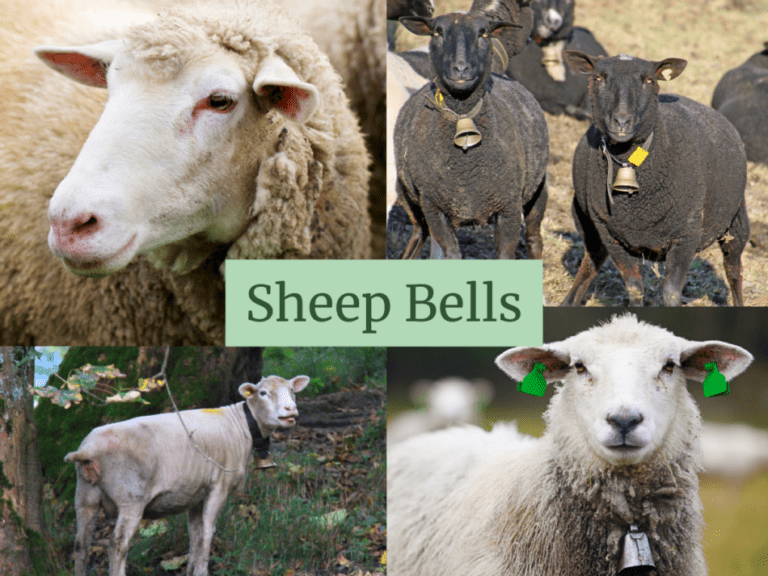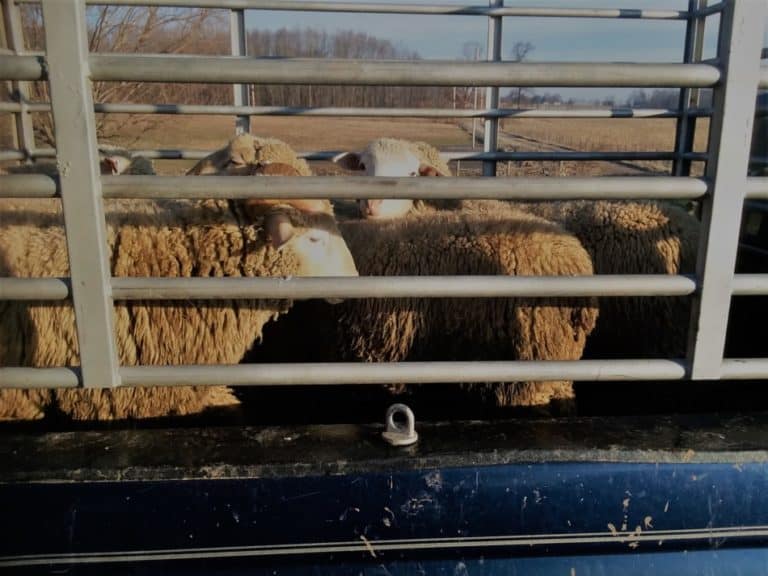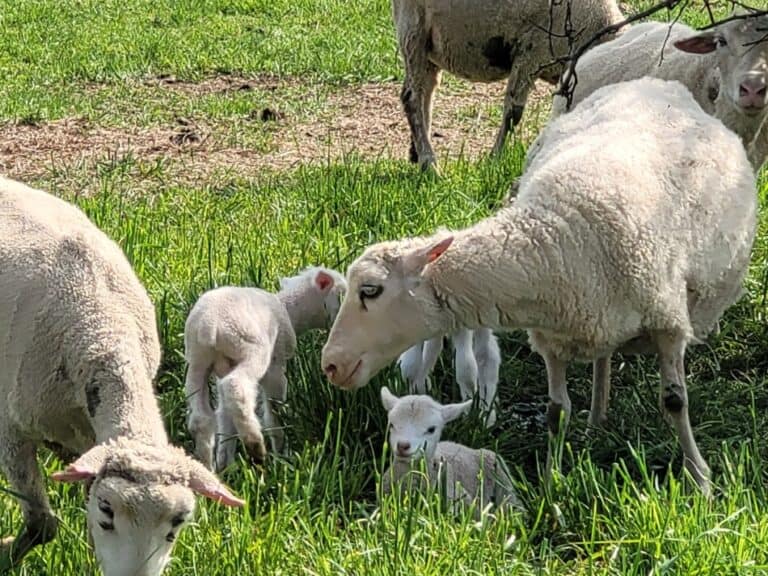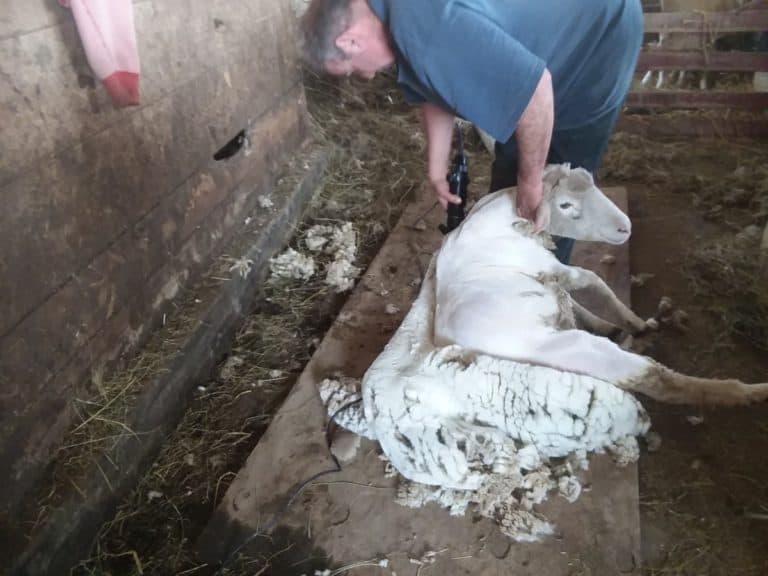ElectroNet 9/35/12 For Sheep: Should You Buy It?

I’m sure you’ve looked around at your sheep fencing options and come across ElectroNet being used as a portable sheep fence. Will it work for you or should you spend your money on something else?
Premier 1 ElectroNet 9/35/12 is a 164 foot long, 9 strand portable electric fence netting for sheep on pasture. Dryland pastures, mixed sheep and goat flocks or brushy areas should not use ElectroNet 9/35/12.
We are going to be looking at the ElectroNet 9/35/12 with the single spike post, which is one of the many trademarked electric netting products made by Premier 1.
Choosing Sheep Fence gives you an idea of which fence will work best for your flock based on how you manage your sheep.
| Product name | ElectroNet 9/35/12 |
| Cost (January 2021) | $125 |
| Length | 164 feet |
| Height | 35 inches |
| Horizontal strands | 9 |
| Strands carrying power | 8 (bottom strand is not electrified) |
| Support struts (plastic) | every 12 inches |
| Post spacing | every 12.5 feet |
| Post description | Single spike PVC |
We have quite a few rolls of ElectroNet 9/35/12 and use it everyday, year round for our livestock, mostly sheep.
Pros And Cons Of Raising Sheep gives you the good and the not so good of raising sheep on your farm.
To be clear, there are different types of ElectroNet, but we always use the 9/35/12 even though we are fencing in or out a few different animals.
Positive highlights of ElectroNet :
- fast set up and take down
- portable
- light weight so you can carry it (don’t need a vehicle)
- sheep respect it as a fence
- can fence in nearly any shape or terrain of pasture
- facilitates multi species grazing
Challenges with ElectroNet:
- can lean with wind, snow or ice load
- must have power
- no length adjustment
- must be fully upright
- will snag easily when being moved
- requires monitoring for sagging and voltage
These highlights and challenges apply to electric netting in general, not just the ElectroNet 9/35/12.
ElectroNet is reliable, portable sheep fencing
We love ElectroNet for the sheep! As I mentioned earlier, we use it 365 days a year.
If you are looking for a portable and reliable electric fence for sheep, buy the ElectroNet! Nothing that we have found will do a better job of keeping your sheep in their paddock, yet still be portable.
We use the ElectroNet to move the sheep around the farm through out the grazing season and as a semi permanent fence for the winter, when we keep them in one spot and feed hay and haylage.
The great part about ElectroNet is that it can be set up in nearly any shape and by connecting additional rolls can be as long as you need.
The netting does require power. You have multiple options as far as energizers, with different power levels, that are plug in, battery powered or solar.
For other options to fence in your sheep, read Sheep Fencing: Choosing Electric Or Permanent Fence.
Purchase multiple rolls of ElectroNet
I would recommend getting multiple rolls of the ElectroNet, if you can afford it.
Why? That’s easy, when you need to move the netting to a new spot, what’s keeping the sheep in?
We use 4 rolls to contain the flock and then set up another paddock beside it using 3 more rolls, so it looks like a digital 8.
This way we open the middle section and the sheep go through to new grass, while staying in the fence the whole time.
We “leapfrog” the rolls of netting, so the paddock they just came out of (but aren’t in any more) gets taken down and moved to the paddock they will go into next.
If we only had the original 4 rolls, what would keep the sheep in place while we are moving fence?
If you are using the netting to make a divider across a permanent paddock, you could just move the fence a little at a time and that would work.
If you need to move the sheep to a whole new area, you’ll need multiple rolls to work with.
We prefer the single spike 164′ ElectroNet
You’ll notice in the table above this ElectroNet that we are using is single spike, but if you check out Premier 1’s site there is a double spike option and a shorter length option available. We don’t use either.
We use 164′ rolls, they are the best price per linear foot
We are exclusively using the 164′ rolls because we need all of the length we can get. The 100′ netting is nearly the same price, so the best buy per foot of netting is the 164′ roll.
If you think the 100′ roll would work better for you, be sure to actually measure the fence lines you would be putting up.
If you are good at estimating length (my husband is), just eyeball it, but I’m not and need to actually measure.
A complete perimeter fence or a fence line that is not straight will take more length than you would guess.
A complete perimeter of ElectroNet seems to deter predators
We noticed last lambing season that we had zero predator losses in the ewe lamb flock.
How did the ewe lambs not have any predator problems and the older, presumably better moms, have predator losses?
The best we can tell is that the ewe lambs were in a paddock completely surrounded by netting.
Even though the ewe lambs were in an area that was further from the house and barn, which should have made them easier targets for lamb snatching, they had no predator losses, which we attribute to the netting.
Deer do not knock over the ElectroNet
We have a good number of deer run across our farm and so far have not seen any indication that the deer are causing problems with the fence.
If I had to guess, they are just jumping right over it like they do for the woven wire.
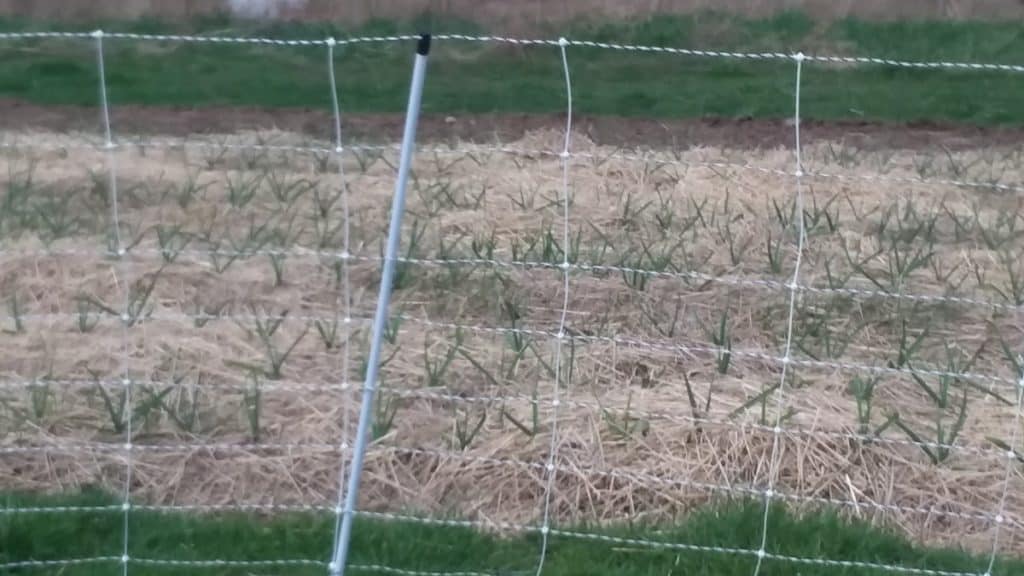
ElectroNet can be used for more than sheep
We use ElectroNet for all manner of things, sometimes sheep, sometimes not.
Using netting to fence sheep out of garlic field
We use netting to fence sheep out of our garlic field. The garlic is about 1/4 acre and is in one of the sheep pastures.
We need a reliable fence around the garlic, but we also need to be able to reconfigure field, since the garlic ground is rotated every year.
Using the netting to keep the sheep and other animals out of the garlic works great.
Using sheep netting as temporary lanes to move sheep
We use netting as a guide to move the sheep, especially when we need the flock to go up to the barn past other grass or through a difficult gateway that they are studiously avoiding!
In the winter, we can just use hay to lure them through the gate rather than setting up a lane.
In the summer, when the grass is plentiful, the sheep are less cooperative! This is when we need the lane.
Put up a section or two of netting and you instantly have more “help” to move the flock.
When we are using the netting as a lane or guide, it is not electrified. The next section goes over the need to keep your fence hot, but in this specific use, we don’t.
The reason we don’t have power on these lanes is because the sheep are just walking by and we are there watching them the entire time.
To be clear, we do not pressure the sheep or leave them alone in the lanes. They walk calmly and are supervised the entire time.
If you need a lane that can be pushed against (like a sorting corral), it must be solid fence like woven wire or cattle panels and T posts.
If you are going to leave the sheep in the lane to graze, it must have power, since you are not using it as a lane you are using it as a pasture.
ElectroNet must be electrified
In order for the netting to work, it must be electrified.
Get an energizer that has more power than you think you’ll need, since electric netting is power hungry compared to single strand wire.
If the netting is set up, it needs to be powered
Your sheep will start to “test” the netting if you are using the netting without power.
Once they figure out that there is no shock when they reach through it or lean into it, you’ll have problems keeping your sheep in their pasture!
Not to mention, when the sheep start to reach through a non electrified netting, they can get stuck in it. This is bad news.
Generally, a sheep or lamb will struggle and thrash around until they get out or strangle themselves, unfortunate, but true.
The second problem with getting stuck in the fence is bloat. Even if the sheep stops struggling, it’s still not out of danger.
Unless you notice the problem quickly and can untangle the sheep from the fence, the sheep is likely to start to bloat. Bloat progresses quickly and will kill the sheep if you do not intervene.
I’m not trying to be dramatic here, these are real consequences resulting from low or no power netting allowing curious sheep to get themselves into trouble.
The best news here is: you can prevent all of these problems by keeping the fence smoking hot and fully upright.
Finding sheep in the fence usually happens when the fence is not operating properly, meaning you neglected to monitor fence integrity and/or check the power output.
ElectroNet has some drawbacks
For some situations, ElectroNet is not going to work or it’s going to be very difficult to use.
- If you are in an extremely dry area, you need a different netting that is more conductive than the ElectroNet 9/35/12.
- If you are primarily fencing in goats, get a different netting. Our goats do not stay in this netting, even though it works fine for the sheep.
- ElectroNet 9/35/12 does not keep in poultry of any sort, not even the bigger birds like geese. This netting is designed for sheep, if you need to keep in birds, use a netting designed for chickens.
- Brushy areas or places with an abundance of snagging opportunities will drive you crazy, the netting will catch more often than not. You could clear a path for the netting, just know that anything other than grass sticking up will snag the netting.
- Netting does not last as long as cattle panels or permanent fence. You will need to replace the rolls periodically. With age and time in the sun, the netting starts to wear.
Electric netting has challenges during normal use
Overall, we feel that ElectroNet is a great way to fence in our sheep, however, there are times when electric netting is challenging to use.
Problems with electric netting that we have had even when the netting is being used correctly are;
- Heavy snow and snow drifts
- Soggy ground with wind
- Very dry summer
- Curved outline to pasture causing netting to sag
Snow and snow drifts will make the sheep somewhat insulated from the shock of the fence, even when the fence is carrying plenty of power. This is very frustrating!
We have not had this happen lately, simply due to not having much snow the past few winters.
However, when the sheep figure out that there is no penalty for touching the fence, they’ll start reaching through and eventually getting out.
During soggy ground conditions that tend to come with high winds, you’ll find that your posts start to lean with the wind, since the wind is catching the netting and pulling the post over.
Usually it takes the sheep some time to notice this, since during the high winds they are hunkered down and not exploring, but once the weather breaks you need to have those posts reset before the ewe start investigating.
In extremely dry weather, an electric fence does not shock well. This goes for single strand wire as well as electrified netting.
The electric charge is looking for an easy exit to the dirt. When the ground is super dry, the sheep is not the easiest way for the charge to go, so the sheep do not get shocked as easily as they would when there is more moisture in the soil.
This is another frustrating one, especially if you have your fence carrying plenty of power.
A curved or abruptly changing outline to your pasture can cause the posts to be pulled over slightly, which results in a sagging fence. You can use additional support posts to try to get more support to fix the sag.
Sometimes, a few sections of netting sag a bit and that’s the best we can do with it for this particular pasture move. As long as the sheep are getting plenty to eat, a slight sag will not be a big deal.
Once they start looking for better, your most adventurous ewes will consider jumping that low spot. Fence jumping is contagious and a hard habit to break.
There are other electric netting options
If you find that you need something a bit different than the ElectroNet 9/35/12, you have mulitple other electric netting options.
Here are just a few highlights, to show you the range of nettings available:
- Goat & Sheep Net
- Pig QuikFence
- PoultryNet Plus
- ElectroNet with drivable posts
Check out the full list of available nettings here. Other companies have electric netting available, but I am only familiar with Premier 1 products, so that’s the site I’m linking to.
Multi species grazing might need a different netting
For multi species grazing, you’ll need to choose the netting that is suitable for the animal that is the most challenging to fence in.
Example 1: sheep and chickens in same pasture
For example, if you want sheep and chickens to graze together and you don’t want the chickens to be able to leave the pasture.
In this case, you’ll need to use an electric netting designed for chickens, since chickens are more difficult to fence in than sheep.
If you don’t care if the chickens zoom in and out of the pasture, ElectoNet 9/35/12 will work just fine. The chickens will come and go as they please.
Example 2: sheep and cattle in same pasture
If you wanted to graze sheep and cattle together, ElectroNet 9/35/12 works great, since sheep are more challenging to fence in than cattle.
In this case you’d have “more fence” that you need for the cattle and a fence that is just right for the sheep. This combination works great and is how we run our sheep and a small herd of cattle, year round.
